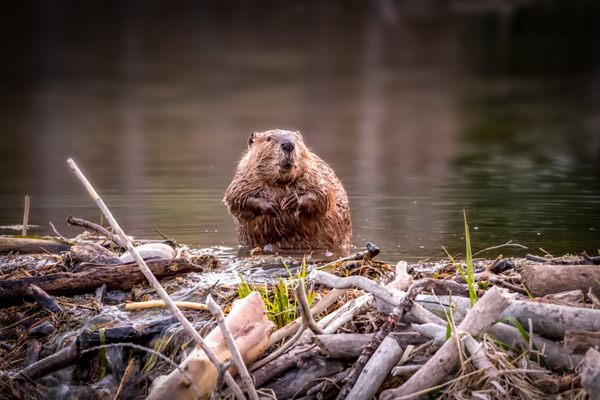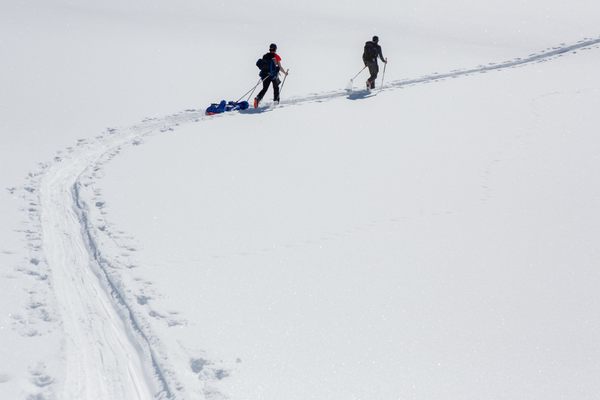Found: Massive, Ancient Maya Farms
The fields offer insights into historic trade routes.

If you set Google Maps to satellite view and mosey over to the Laguna de Términos, a bay and biological gold mine along the Gulf Coast of Mexico, zoom in and head inland along the northeast of the lagoon. You’ll start noticing a terrestrial patchwork quilt north of the city of Pital. The patterns make the land look like it’s covered in agricultural fields, but those fields are now covered in mangrove forests and haven’t been farmed in hundreds of years. Researchers at the University of Cincinnati have been unearthing evidence showing that this swath of land was once a massive Maya agricultural development.
Nicholas Dunning, a geographer and Mesoamericanist, began studying this area about seven years ago, when a Mexican forester alerted him that he had spotted features on the ground—a distinctive, dense network of canals with fields in between them—that suggested the land had once been blanketed by agricultural fields. Dunning examined the area from afar on Google Earth and was stunned. Additional comparison with lidar images obtained from the Mexican government confirmed that the contours of the land resembled other known Maya agricultural fields.
“What makes this particular area novel is the size”—it spans about 75 square miles, compared to previous patches which tend to be no larger than a dozen square miles in size—“and the fact that it was undetected until the last seven years,” says Dunning. Based on the evidence, researchers believe that the field system grew incrementally over a long period of time, beginning as early as 800 BC through to the 1500s, when the conquistadors arrived.
Previously, archaeologists theorized that ancient Maya cities were subsistence-based, growing most agricultural products in close proximity to, and sometimes even within, city limits. But the canals cutting through the land north of Pital and the fact that several large rivers, including the Río Candelaria, connect with the Laguna de Términos suggests that rather than moving goods by foot, those fortuitous enough to be located near rivers or on the coast could ship and receive goods by water. These ancient Maya fields were located in an area called Acalan, potentially derived from acalli, the Nahuatl word for canoe, so Acalan may have meant “place of the canoes,” according to a recent presentation Dunning and his University of Cincinnati colleagues gave at the Midwest Conference on Mesoamerican Archaeology and Ethnohistory.
Sixteenth-century accounts from Spanish conquistadors place settlements in the Acalan along rivers and other bodies of water, but “don’t make any mention of the fields … initially they just lopped off the top of the social and economic hierarchy and placed themselves there. They demanded tribute, but weren’t initially interested in how that was being produced.” The fields were relatively distant from the densely populated coastal towns that initially interested the conquistadors, so although they were undetected by the Spanish at the time, those chunks of land were likely providing the fuel for the cities they conquered.
“We’ve known for a long time that the Maya were avid traders, but that part of their economy has not been well articulated within archaeology and we are sometimes blinded by what we’re expecting to see,” Dunning says.
The new evidence suggests that foodstuffs and cotton were shipped along the Río Candelaria and up and down the Gulf Coast to more populous ancient Maya cities. Researchers speculate that these cities included Itzamkanac (“which means place of the crocodile, more or less—and there are healthy populations of crocodile swamp in that area”) and Chunchucmil further up the coast. For both of these cities, there is evidence that populations far outweighed production. Until the fields are excavated, though, researchers won’t be able to say anything more concrete about the timeline over which the fields developed or what was grown there.











Follow us on Twitter to get the latest on the world's hidden wonders.
Like us on Facebook to get the latest on the world's hidden wonders.
Follow us on Twitter Like us on Facebook